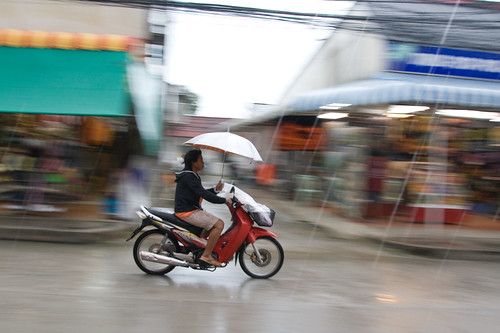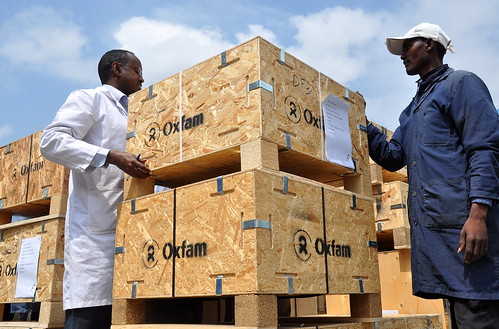James Penstone
This user hasn't shared any biographical information
Posts by James Penstone
Banks
Mar 15th
Might be useful for the IGCSE Economics course: an introduction to banking system, and an explanation of Central Banks (although this is quite high level stuff).
Panning–Capturing A Sense of Sideways Motion
Mar 14th

Image: Some rights reserved by zoutedrop
The above photo achieves a nice effect. The subject of the photo is respectably crisp (in focus) but the background is deliberately blurred to give a sense of the movement which is happening here. The techniques used by the photographer is known as panning and you should give it a go.
First, check this video …
Now read up from one or both of these useful sites:
Mastering Panning – Photographing Moving Subjects by Digital Photography School
Mastering the panning technique by Gavin Gough
Micro-credit Schemes
Mar 7th
This is a nice and simple introduction to microfinance which features microcredit, as explained in the video itself.
You could explore this web site which is an example of a charity organisation seeking to facilitate microfinance. There is a useful video on the home page.
Similarly, this website gives details of microcredit in practice:
The Grameen Bank, founded in Bangladesh by Muhammad Yunas, is often cited as the main pioneer in the field of microfinance. This short video features Yunas and explains the concepts:
This video gives an example of apparent success:
WorldBank provides an example from Mauritania:
Fair Trade Organisations
Mar 7th
A brief and accessible explanation is here:
BBC Bitesize Fair Trade (Geography GCSE)
Here are some videos to introduce you to the idea of Fair Trade:
Some rights reserved by Oxfam East Africa
DiagramConsultores gives us this case-study video on Fair Trade in the Domincan Republic:
mobiuslive posted an excerpt video from eq.tv on fair trade:
Types of Aid
Mar 7th
The IB Economics Syllabus (2005) requires you to understand:
Types of aid
• bilateral, multilateral
• grant aid, soft loans
• official aid
• tied aid

Image: Some rights reserved by Oxfam East Africa
You can quite quickly find out what these mean by visiting these websites:
BBC Bitesize Types of Aid (Geography GCSE website)
Types of Aid by Scalloway.org.uk
PDF file – AID – what are the different types? by World Vision Australia School Resources
Stock Exchange
Feb 28th
In the IGCSE Syllabus for Economics we have the following:
describe the functions of central banks, stock exchanges, commercial banks;
This post addresses the second of those financial institutions listed, stock exchanges.
First, this entertaining video produced in 1952 for a US audience does a good job of explaining how a stock exchange works:
This video from the mid 1990s shows how the New York Stock Exchange had moved on from the 1950s – what do you think are the main differences?
Then, if you have time, see how interconnected the world’s stock exchange markets are today when crisis hit in 2008 as a major investment bank in Wall Street was suddenly taken off the world finance market as it filed for bankruptcy (find out what that phrase means). Two news clips introduce the events …
A major crisis like this had happened before. For the historian in you, this documentary clip summarises the 1929 Wall Street Stock Market Crash …
Exposure and Long Exposure
Feb 21st
The first video summarises the three crucial controls needed to get exposure right – Aperture, Shutter Speed and ISO.
This excellent interactive SLR camera simulator allows you to experiment with these controls on a virtual camera:
This second video sets us an assignment to create long-exposure photography. Here, the photographer uses a classic scenario – moving car lights. (the same technique could be applied to many scenarios where general light conditions are very low but bright lights are moving fast – think of some others for yourself). Notice first that one extra key ‘ingredient’ is needed … a tripod. Notice, too, that this technique involves all three controls (aperture, shutter speed and ISO)

Differences in Earnings between different Occupational Groups
Jan 26th
Here are some resources to help you with this aspect of the IGCSE Economics syllabus:

Source: Capital Gains Tax Rate & Income Inequality Chart
Via http://www.fastcodesign.com
Mastering Light in #Photography 1 – Adjust Your ISO Settings
Jan 24th
If photography is ‘writing with light’, we need to learn how to control the light entering our cameras if we are to take successful shots.
There are three ways of controlling light – adjusting aperture size, shutter speed or ISO settings.
ISO settings refer to the sensitivity of the camera’s sensor to light. The sensor is at the back of the camera, inside the body, where the image is captured electronically. In more traditional cameras, this is where the film would be. In film cameras, we need(ed) to choose the speed (or sensitivity) of film for different light conditions.
Low ISO film and low ISO settings on a digital camera need lots of light to capture the image, but give the sharpest image and richest colours as a result. Think bright sunny days giving vivid and clear images.
High ISO settings work with low light conditions, which is the number one reason to use them, but the quality of the picture can be noticeably degraded compared to those taken with a low ISO number in sufficient light. High ISO images tend to have noticeable ‘noise’ or a graininess which may not be desirable, but still may be preferable to switching on the flash. That said, some photographers actually make deliberate use of the graininess, which can look very striking for example on black and white portraits.
Some modern and more expensive SLR cameras give impressive shots even at very high ISO settings with less noise visible.
The key thing is, you should experiment with your ISO settings to adjust the quality of the image but also to allow you to take pictures in dim light to good effect.
It is the one of the three settings which is often forgotten about, but setting the right ISO allows you more flexibility with aperture and shutter which is why I’d start experimenting with this first.
Resources:
ISO Settings in Digital Photography by Digital Photography School.
Use a High ISO to Create Grainy Shots by Digital Photography School.
ISO by MichaelTheMentor
ISO Basics by ulufilms:
Camera Tutorials – ISO by QQQcon
Introduction to Development
Jan 22nd
This post offers some resources to help learn about the key syllabus pints under section 3.2 of the 2005 IB Economics syllabus.
Definitions of economic growth and economic development
and
Differences in the definitions of the two concepts
This video excellent by Flame India includes points on limitations of using GDP to compare welfare (below) and alternative measures (HDI). Take note of the definitions by Michael Todaro and also the contributions of Amrtya Sen and Mahbub ul Haq. Note how Economic Growth contributes towards Progress in Human Development.
Gross Domestic Product (GDP) versus Gross National Product (GNP) as measure of growth
To recap the meaning of GDP, you might use this opengecko post:
To see some examples of actual GDP figures, you could use this post:
Comparing GDP and Other Indicators Across Countries
PAJ Holden gives a detailed explanation of the difference which lasts 8 minutes:
This video summarises the differences much more quickly:
Limitations of using GDP as a measure to compare welfare between countries
Notice – Joseph Stiglitz also points out the difference between GDP and GNP (above) as well.
Allowance for differences in purchasing power when comparing welfare between countries
Alternative measurements of development
Composite Indices – HDI and beyond by hdr.undp.org

See the original (via EU Infrastructure) here.
Problems of measuring development
For this section, you may conduct your own online research and/or consult your text book.








